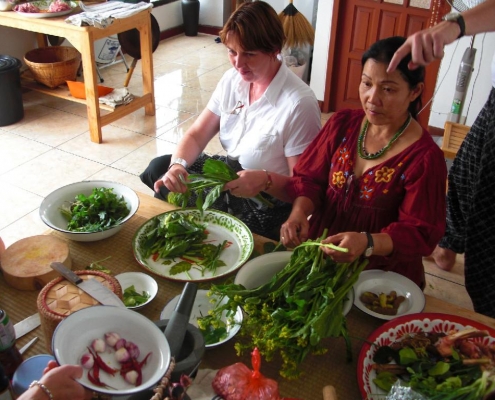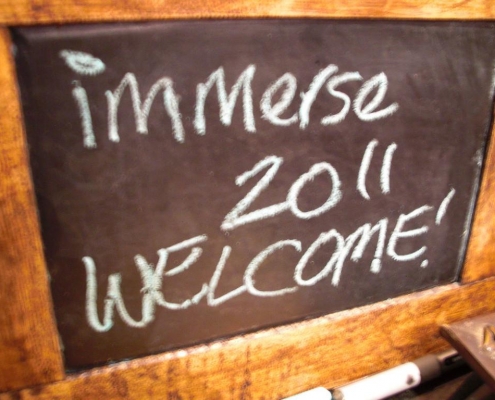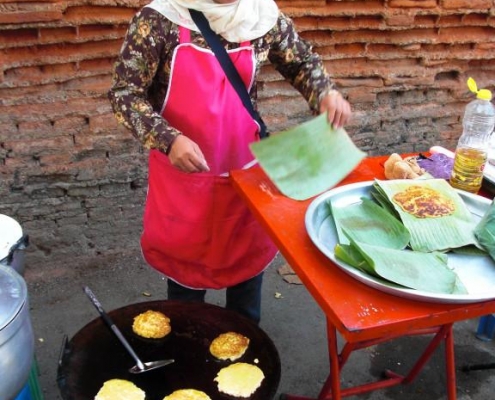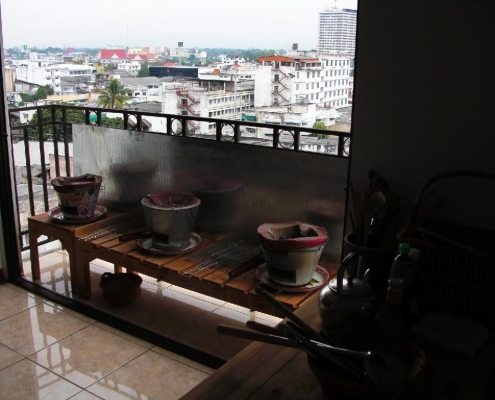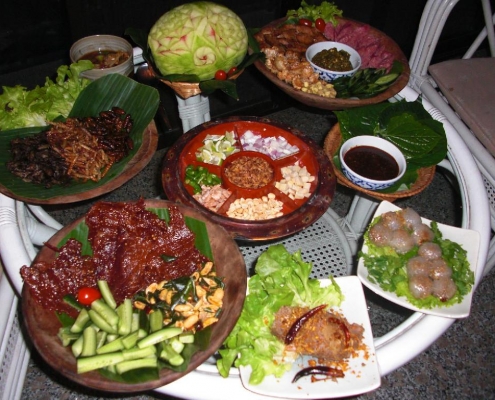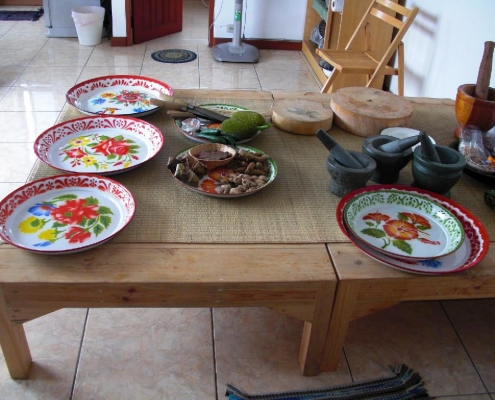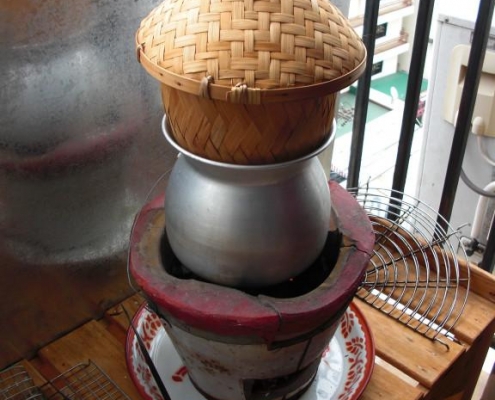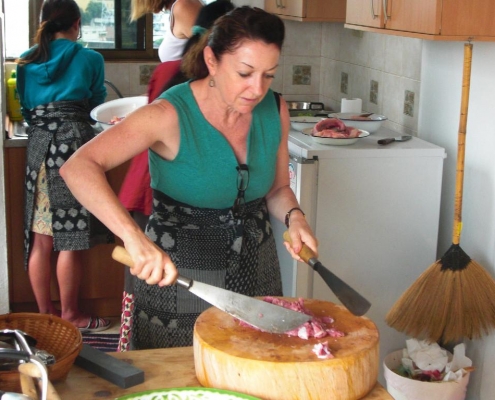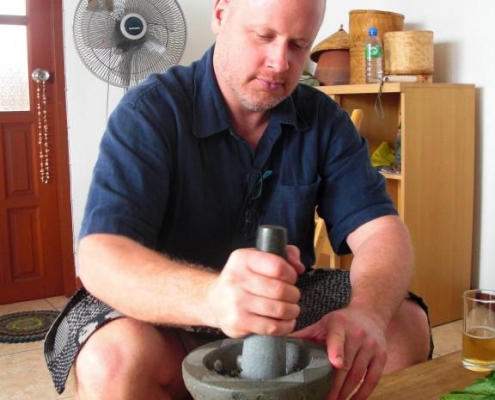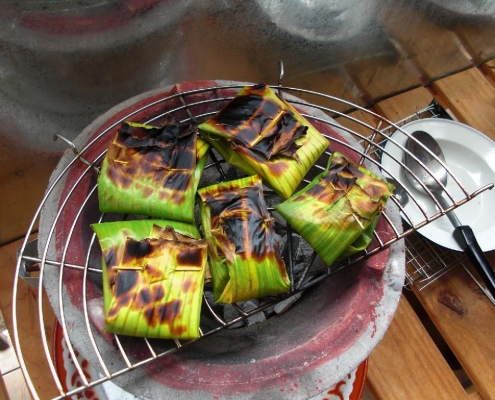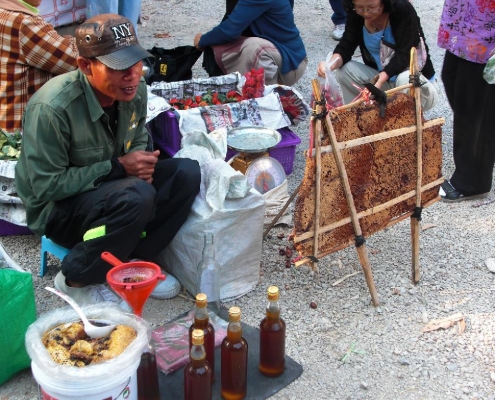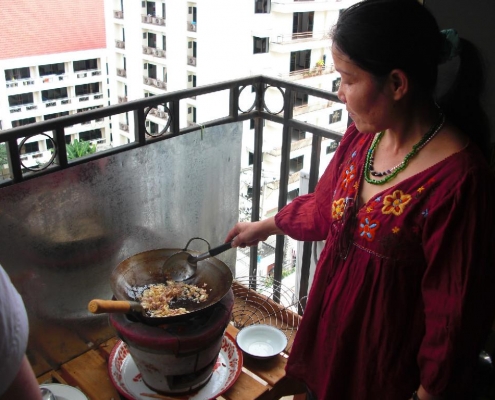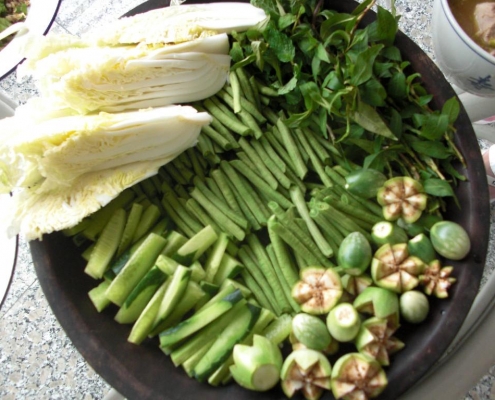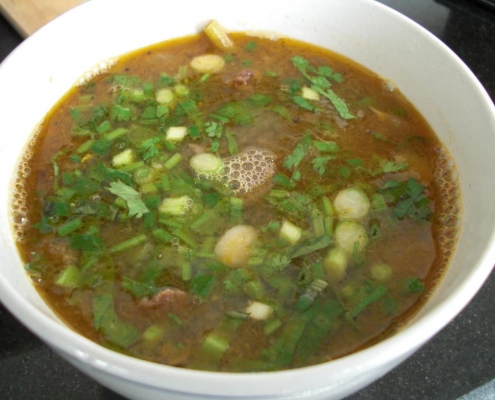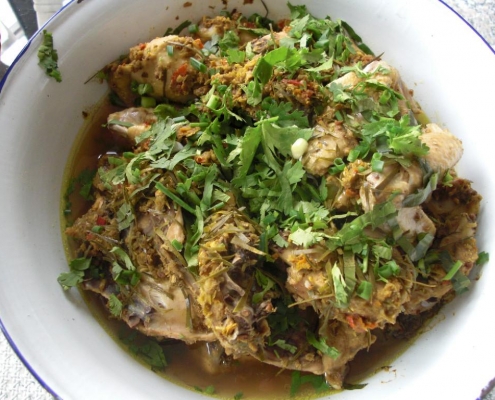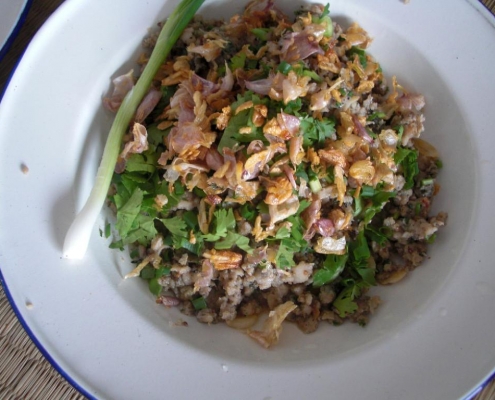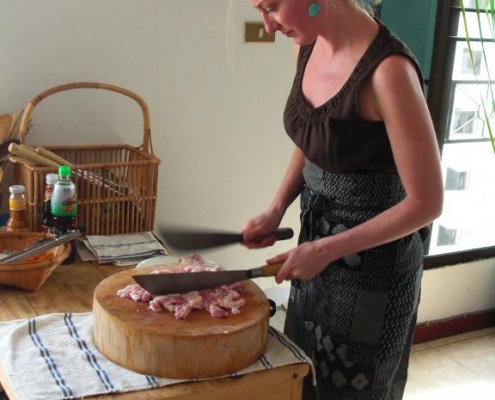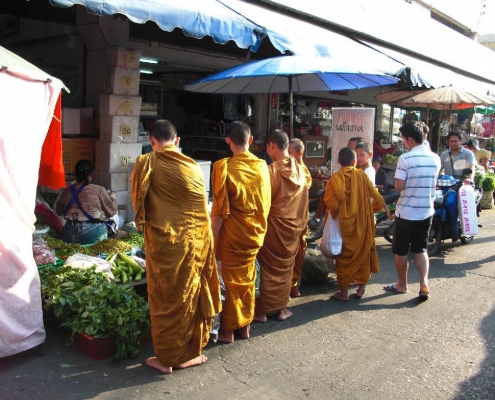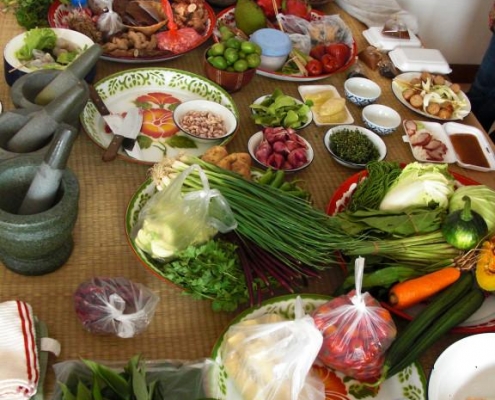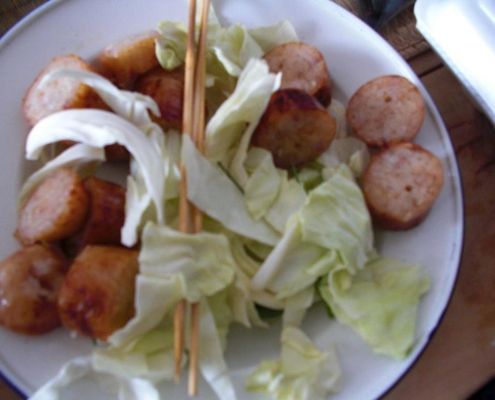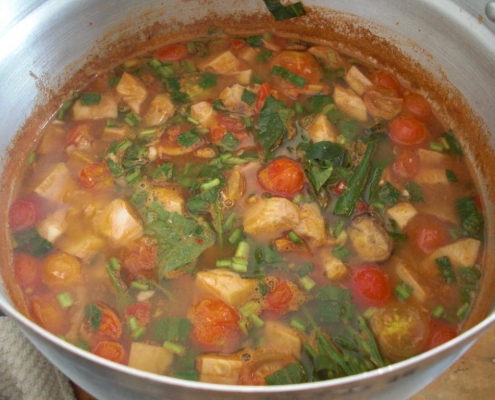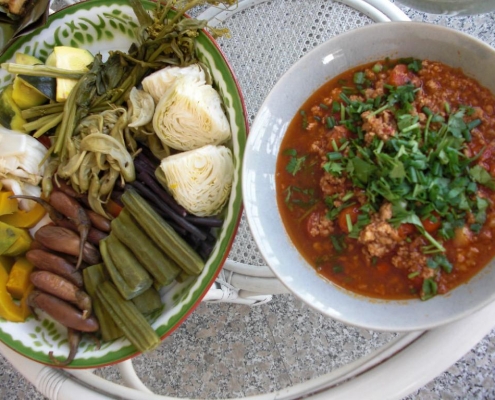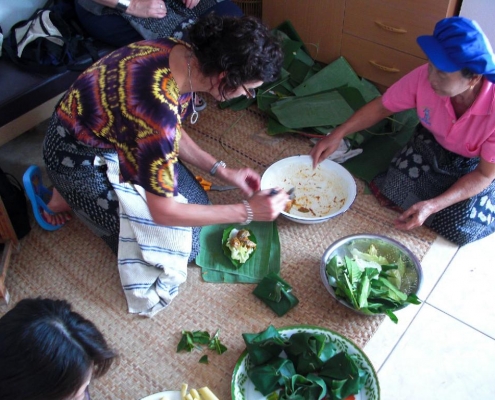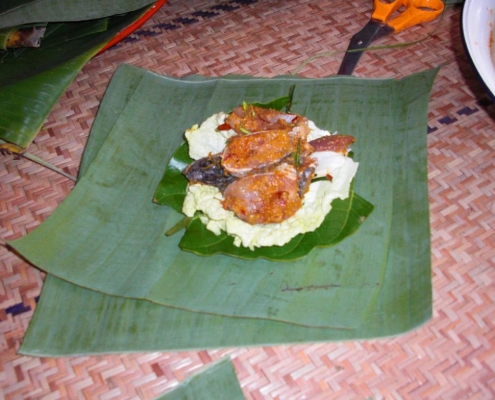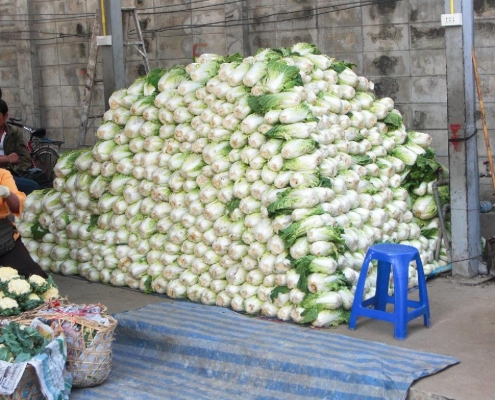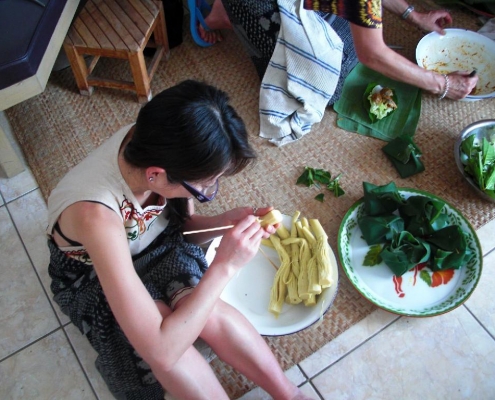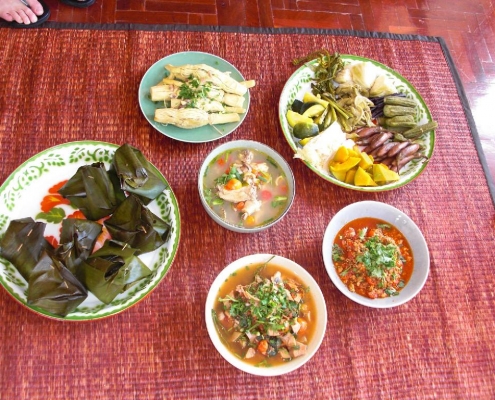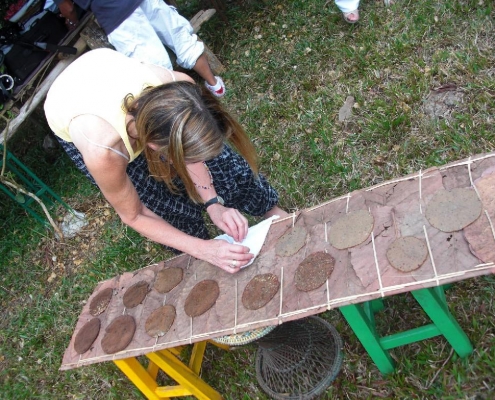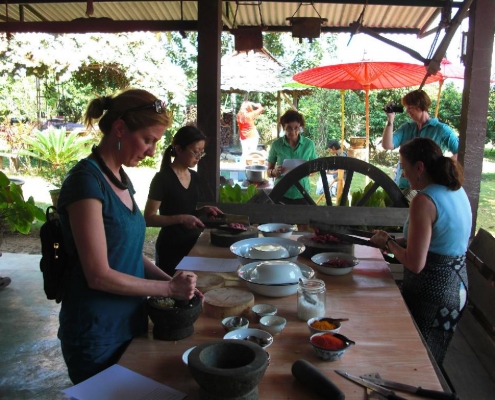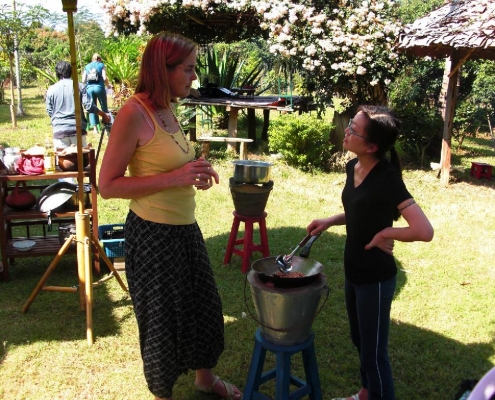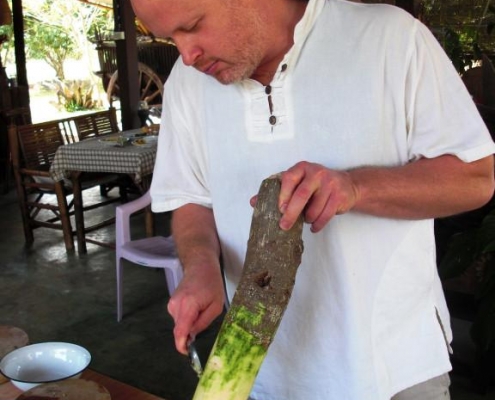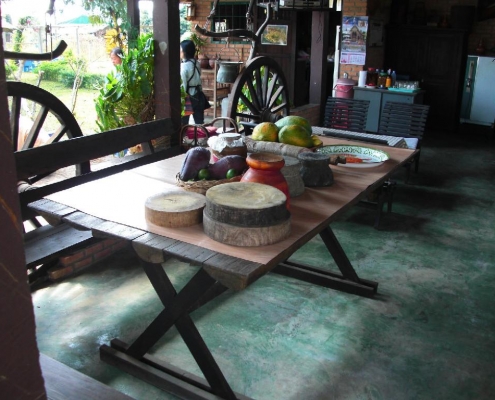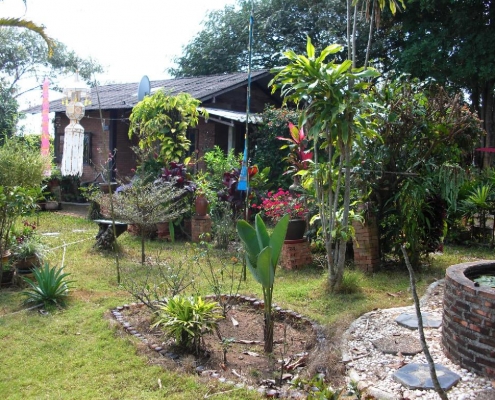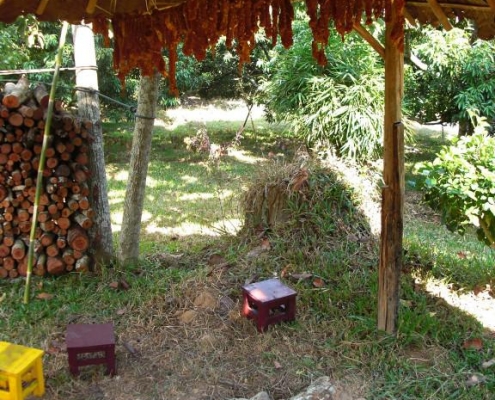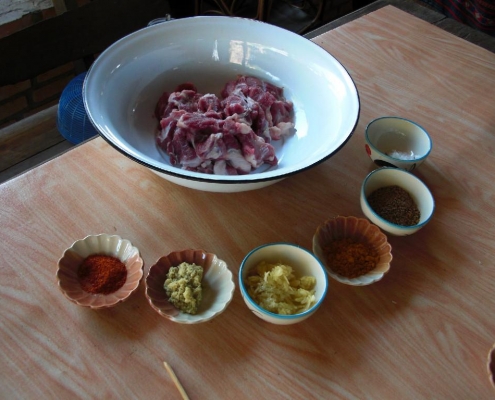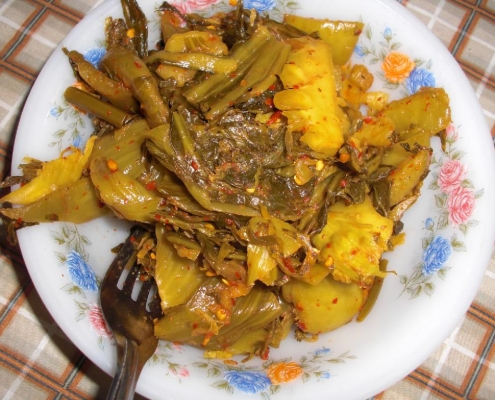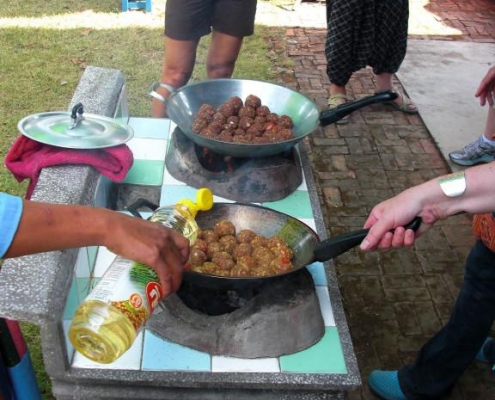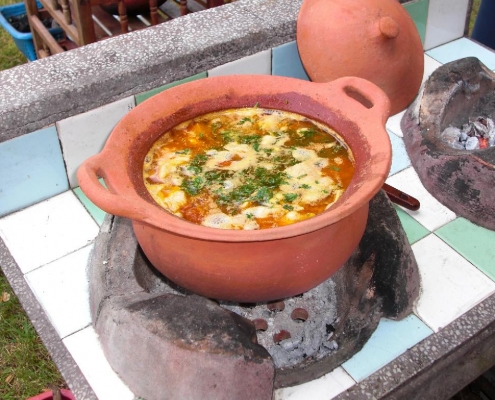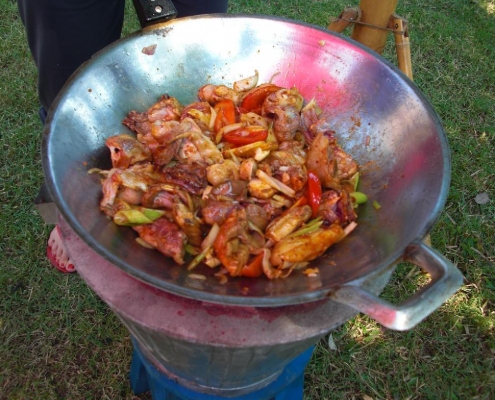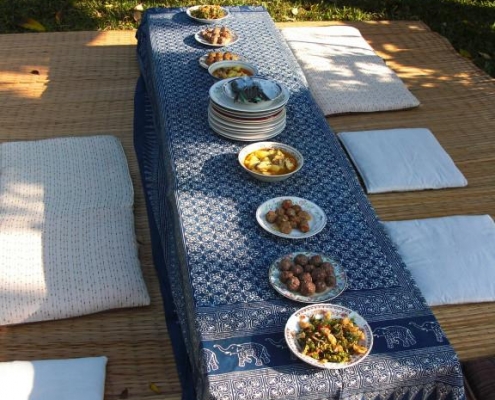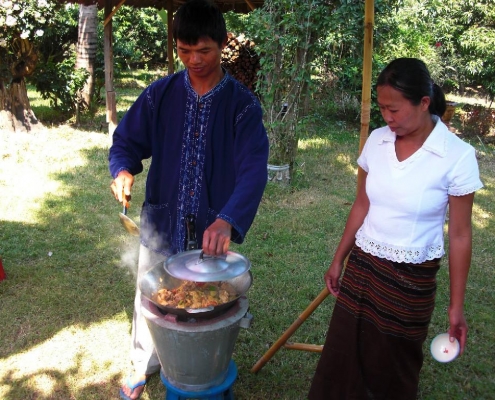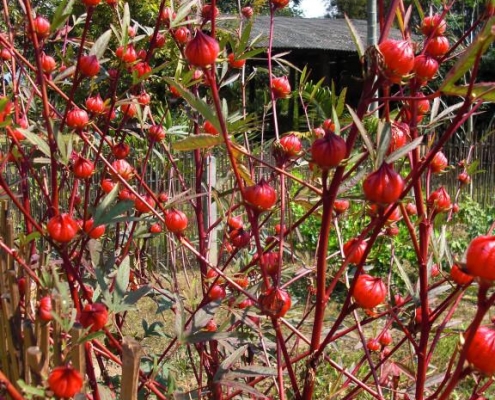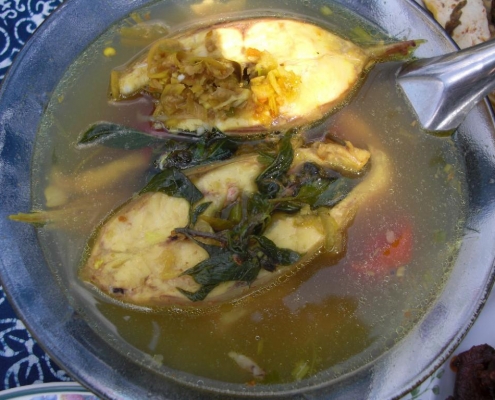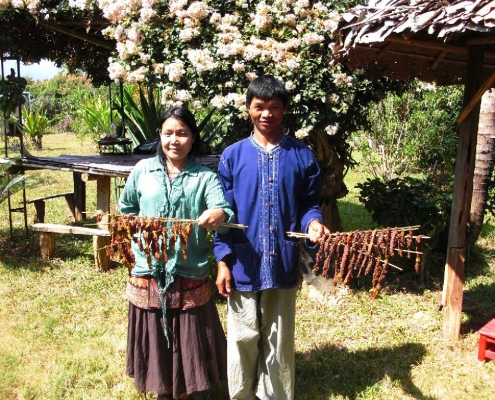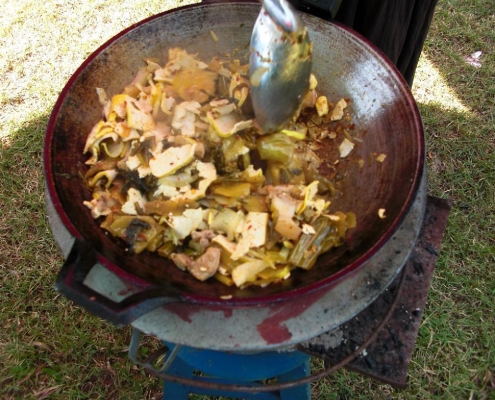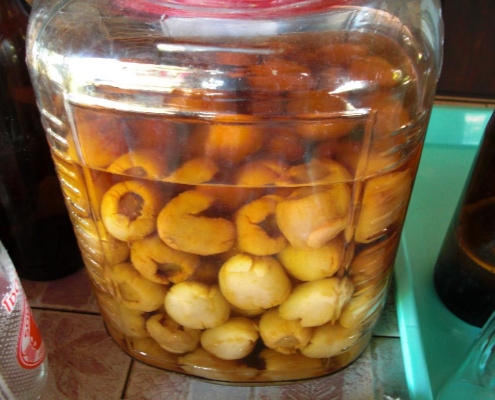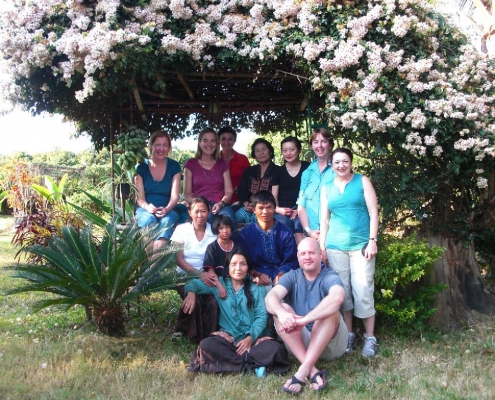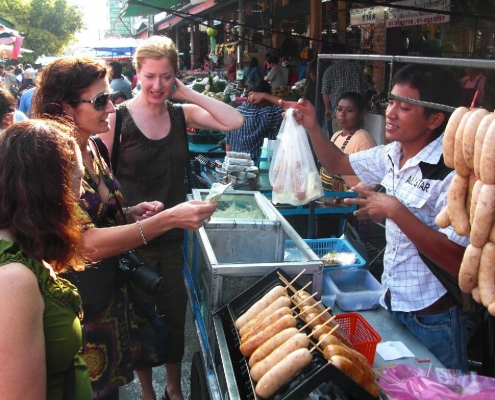Having left Thailand a bit “under the gun” had me weary about going back. I had a tough run there as a chef setting up restaurants while the airport was being shut down, the Asean summit being fire-bombed and the capital city shutting down and descending into a kind of civil war for months. But, I had this trip planned for quite some time and to tell the truth I was itching to travel again. So 2 weeks after starting my new job doing ideation for the leading Asian chain in the US, I hit the tarmac and back to my former home.
The flight to Thailand is long, and leaving from Phoenix made it even longer than usual. I departed at 6am and arrived in Chiang Mai (via Seattle, Tokyo and Bangkok) approximately 24 hours later. An upgrade not withstanding, it was a long day. Everything went off with out too much drama. I got my sushi at Sushi Kyotatsu in Narita Airport (across from gate 33) which is always a treat – and made it to Chiang Mai 30 minutes ahead of schedule. I got picked up at the airport, dropped my bags at the hotel and hit the pavement. It was Sunday – the day that the Old City of Chiang Mai hosts a open-air market where you can buy just about anything, get some great street food and drink in a bit of the North. (Note, go early – before 5pm, as the later it gets the more crowded it gets). I got some grilled chicken with tamarind nahm jhim, some wok-fried noodles and bought a scarf for my mom. On the walk back to the hotel I stopped and got a Thai massage – critical to bend and stretch that long flight out of my joints and was off to meet Naomi and the rest of the participants.
We met in the lobby of our hotel and headed over to Naomi’s apartment to have a bit of Thai mezze, a chilled beer and get a game plane and overview of the coming days. The group consisted of me and Amy (the two yanks of the bunch), Anne, Anna and Collette (3 serious foodies from Australia), Mizuho (the super-women from Japan via San Francisco and Italy), Naomi and her assistant Khun Fern.
It was early evening and everyone was feeling the jet-lag but we were hungry and wanted to dive in. We first went to the Tonlamyai Market to get some kanom jin noodles. These simple street foods are big on flavor and do an excellent job showcasing how Thais (among other Southeast Asian cultures) can take prepared food and customize it to your liking. At this stall, the 4 main toppings for the noodles are spicy-pork curry, fish balls in broth, green curry and spicy fish soup. From there you can bring the flavor to new heights with the addition of many condiments: dill, 2 types of basil, shredded banana blossoms, various sprouts, various pickles, sugar, vinegar, chili powder, shredded cabbage and crispy pork skin. We wandered the streets for a bit longer gathering more snacks – excellent grilled pork, some fresh fruits, various sweets, some siu mai – and made our way back to the hotel to collapse and get that ragged first night’s sleep after a trans-continental flight.
The next morning we met in the lobby and walked to Warorot Market to buy the products we were set to fabricate into that day’s lunch. We all stuck close and watched Khun Fern haggle with the vendors for the best chicken, pork belly, fresh herbs, live fish, vegetables and beef. We were getting cultural/culinary explanations about the various ingredients and slowly everyone was starting to open up and drop inhibitions. The thing about Thailand is it’s a culture of snacking rather than 3 set meals where everyone sits down and engages in a ritual of pomp and sustenance. Everyone in the group falls into this pattern quite effortlessly and these market visits become an endless graze. It began like this – question: “what is that?” answer: “I don’t know, but it looks delicious – buy it and lets try it.” We must have tried 10-20 different snacks throughout each market visit – this is life in Thailand and everyone was adjusting nicely.
Highlights for me were grilled pork belly, Chiang Mai sausage, tiny crepes filled with slivers of fresh young coconut, tamarind candy, bau stuffed with minced pork and salted duck egg, siu mai, cane juice, fresh roti, fresh soy milk, grilled bananas – oh, and did I mention grilled pork belly and Chiang Mai sausage….I even began to be associated by my fellow travelers with the name of any of the pork products that were in arms reach – as I love the humble piggy and all it can do.
We get back to the apartment, unload the ingredients and begin to cook. Everyone wanted to do everything – we all take turns mincing, wrapping, wok frying and grilling. I am amazed at everyones’ openness and experience they are bringing to the group. These are serious food people! Once we plate the finished dishes we bring them into the other room, set them on the floor, open up some chilled Leo beers and get down to tasting our creations:
- Jaw Pakat-Green Vegetable Soup
- Ep Moo-Spicy Pork Pate
- Laab Pla Lanna-Herb Minced Fish
- Gai Nung-Steamed Whole Spiced Chicken
- Gaeng Om Neua-Northern Style Beef Stew
Basking in our greatness as chefs we laugh, tell travel stories and enjoy the moment that food shared amongst people brings to light.
Day 2 starts in the same way but we moved to a new market – one more frenetic and local called Muang Mai (near the American consulate). It is an incredible spectacle of humanity and food products. There are huge displays of everything and the passage lanes are packed with pick-ups, motorbikes, trolleys and people on foot. Now Naomi is giving us money and tasks: “Brad, you go find 1kg of minced pork – make sure its fatty and pink.”; “Mizuho, you go find some Thai basil and garlic chives.”; “Amy, go find turmeric and chilies.” etc. It’s great because she is forcing people to interact and communicate. It is a sunny, warm and inspired morning. The menu we are going to cook is more ambitious than day 1 so with mise en place in hand we head back to get to work:
- Tom Som Gai Lanna-Northern Sour Soup with Chicken
- Nam Prik Ong-Spicy Pork Salsa
- Hoh Nung Moo-Minced Pork Grilled in Banana Leaf
- Gaeng Kanoon-Young Jackfruit Stew
- Op Noh Mai Yat Sat-Pork Stuffed Bamboo Shoots
- Tom Man Gew-Sweet Potato in Palm Sugar Syrup
The dishes of the day for me were the Nam Prik Ong and the Gaeng Kanoon. Nam Prik simply is a spicy relish with raw or steamed vegetables for dipping – kind of a Thai crudité platter. The flavor profiles are endless and this dish is often made and left on the kitchen table for anyone to graze on as they walk through. (My staff in Bangkok always had some version of nam prik to snack on in the prep area of the restaurants.) This version was particularly delicious as its flavors and textures reminded one of a spicy pork bolognaise.
The Gaeng Kanoon was a revelation for me and an education as to the various roles a specific product can play depending on what level of ripeness it’s harvested at and how you prepare it. Jackfruit to me always was a sweet-treat either on its own or served as the main component of a dessert. But if the fruit is harvested while young and still green you can use it as if it’s a vegetable – most often in stews or currys, as we did. The result was akin to the flavor and texture of artichokes – amazing. (an example of using fruit as vegetable is most notable in the use of green, unripe papaya and sweet, ripe papaya. The famous Som Tom salad made from green, vegetal-tasting papaya and sweet, ripe papaya being used in many Thai desserts.)
Day 3 and 4 was our excursion out of Chiang Mai and up to Fang to visit some people preparing local condiments, spending time at more local markets and cooking Shan style foods on Khun Fern’s lychee farm. We left early and had a stop along the way to get more snacks at a roadside market. It was here that Mizuho showed her stuff by eating a bug that must have been half her size. I have been down the culinary daredevil road a few times in my travels but she put me in my place with her gumption. The local and Wednesday market in Fang was very interesting as the cross section of ingredients changed and so did the people. It was a heady mix of Shan, Mueng, Akha, Lanna, Yunnanese and all the extended ethnic variations there of. We bought more mise en place and went to the farm to start cooking.
It is a beautiful piece of land that Fern owns and her Shan caretakers, Jam, Boonma and their daughter Prayao, were gracious hosts showing us how to cook their local foods. After cooking we set up a very comfortable spread under a shade tree, ate our creations and then retired to the rest area to update our notes and sip “lycheetinis” (a home-made lychee and pineapple liquor). Also while up in this region we did a few road trips. We visited a woman who made the most amazing Chinese sausages and home made fermented tofu. I DO mean home-made – she made the tofu, she made the chili-spice paste and she made the corn liquor used to marinate everything. We visited a couple who made tua nao or fermented soybean disks which are dried and then pounded into a powder and used as flavorings in various dishes we ate and cooked. (We also had a go at making our own tua nao back at the farm) We visited the border town of Mae Ai and Wat Thaton which looks over into Burma.
Here is what we cooked:
- Tua Nao – our customized version of the fermented soybean disks used to flavor much of the food in the north
- Yam Pak-Blanched Green Salad
- Neua-Moo Wa Gon-Shan Pork and Beef Meatballs
- Gaeng Man Aloo Sai Gai-Classic Shan Chicken Soup with Potatoes
- Neua Wa Haeng-Dried Spiced Beef
- Galaam Oop-Simmered Cabbage Shan Style
- Pre Saa Sot-Banana Flower Salad
- Gaeng Pla-Fish Soup
- Pakkat Dong Khua Dau Dao-Hu Moo Sam Chan-Greens, Tofu and Pork Belly
- Gai Khua Haeng-Fried Chicken with Herbs
- (There was one renegade dish we made that I forgot the name of – it was a pork soup made with fresh rosella flowers we picked from Fern’s garden – amazing.)
It was interesting to see this Shan cuisine and compare it to the more traditional and famous dishes of Northern Thailand. Burma bumps up to Thailand and there are threads of its’ flavors and techniques that are woven into the regional tapestry of food, but there is even greater differentiation that exists due to the strong cultural traditions of all these tribes whose histories go far beyond the current border-lines on the map. One can really begin to experience this concept when you take the time to travel in a few different countries on one trip. Time and a humble attitude is all you need for your perception and palate to become clearer and less compartmentalized.
The last day I had to leave early and meet some friends back in Bangkok ( we had reservations at David Thompson’s new restaurant) but I was able to tag along for one last market-visit before catching my flight. It was at Ben Haw market next to the mosque of the same name on Chang Klan road. It is here that everyone in Chiang Mai who is not Thai comes to shop. There are Muslim foods, southeast Chinese, Indian, Burmese, Lao and many ethnic variations extending far beyond those constructs. You enter a whole different world as you pass through the gates. We tasted great roti, cornmeal pancakes cooked on a huge caste iron griddle, 5 types of samosas, various types of naan, fried taro, fried chick-pea fritters, mung bean cakes and funky Chinese pickles. I had been to Chiang Mai a few times before and done some serious eating and here I was just steps away from where my regular guesthouse is experiencing food I had no idea existed in Chiang Mai.
Naomi’s ability to be a teacher and facilitator is extraordinary. She gets everyone involved. The itinerary is well thought out – and when you couple that with the openness and time-allotment to explore, it makes for jazz-like experiences. There was constant riffing of comments and questions that would have Socrates running to catch up. I saw how the succession of markets we went to started from the most easily accessible and progressed towards total complexity and nuance.
The same holds true for Naomi’s selection of restaurants that we ate at in the evenings. Traditional Thai, Northern Thai, Burmese, Khao Soy-stands and street-eats. I walked away with a host of new information to digest and add to my repertoire of culinary information. Thanks Naomi, Fern, Boonma and Jam for all your hospitality and thanks to my classmates who taught me a tremendous amount as well.
Naomi Duguid, the organizer, is an extraordinary talent in the world of food. All of her books are landmark works and have done great work exposing the layers of culture and food through out China, Southeast Asia and India. Her curiosity, openness and generosity are inspirational.

